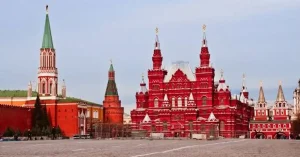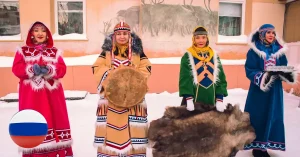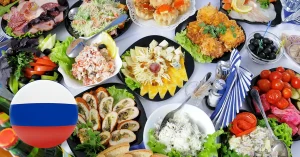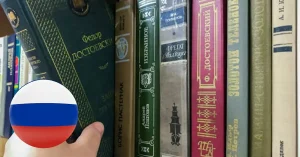Being one of the largest countries in the world, Russia is often viewed through the lens of textbooks, lectures, and research papers. However, to truly understand Russia, one must go beyond the white coats of academics and venture into its picturesque landscapes, cities, and people. In this feature, let’s unveil how Russia’s vast terrain and historic landscapes offer a wealth of learning opportunities that go beyond the traditional setting of a classroom.
The Russian Classroom Experience: A Glimpse into the Academia

Before we jump into Russia’s broader cultural experience, it’s essential to acknowledge the critical role Russia plays in nurturing young professionals, particularly in the fields of science, medicine, and literature. From pioneering scientists like Mendleev to producing the finest novelists such as Tolstoy, Russian intellectuals have profoundly shaped global thought.
Many students and scholars around the world first witnessed the Russia’s profound contribution in the field of education. Leading Russian universities offer world-class education combined with state-of-the-art facilities. Moreover, Russia has been the land of scientific exploration making it an exciting destination for students from all over the world to pursue their higher education interested in STEM disciplines.
The Majestic Red Square: The Epicenter of Cultural Experience

Red Square, the most iconic landmark in Russia, is not merely a tourist attraction, it is a living testament to the country’s history, political power, and cultural evolution. Located in the heart of Moscow, the place is surrounded by major historical places and buildings including the Kremlin, St. Basil’s Cathedral, and the State Historical Museum.
St. Basil’s Cathedral, renowned for its colorful onion dome, is one of the most recognized symbols of Russia worldwide. The cathedral’s unique architecture is a world-class representation of vibrant exterior architecture in contrast to the harsh political history that it has witnessed. Visiting this iconic building in person can provide a deeper understanding of its symbolism than what has been mentioned in the textbooks.
The Kremlin, the historic fortress is now the seat of the Russian government. It stands as a monument to the rise and fall of empires. For anyone interested in Russian politics or history, the Kremlin offers a wealth of insight into the complexities of governance in one of the world’s most powerful nations.
For anyone interested in the history of Russia, one must visit the Red Square. The space has witnessed everything, from grand parades to political protests, and its layer of significance makes it a must-visit for those looking to grasp Russia’s evolution.
Exploring Russia’s Cultural Diversity

The vast extent of Russia is mirrored in its incredible cultural diversity, being the home of more than 180 ethnic groups, bringing unique traditions, cultures, languages, and customs. The cultural tapestry stretches from Caucasian people to the Mordvins and Chuvash in the Volga area.
Moreover, the language spoken across is as diverse as its people, with Russian being the official national language. But, over 100 languages are being spoken in the nation including Atar, Bashkir, Chechen, and Udmurt. The cultural identity of these groups is celebrated through traditional clothing, festivals, cuisine, and art, making each region a vibrant reflection of Russia’s multi-ethnic fabric.
Russian Cuisine

One of the most immersive ways to understand the culture of the land is through its cuisine, and Russia‘s food is an important part of its identity. Russian cuisine reflects the vastness and diversity of the country, with regional dishes that differ greatly from one area to another.
Traditional Dishes to Try:
- Pelmeni: Filled with meat and spices, these dumplings are a comfort food enjoyed across Russia.
- Borscht: A delicious beetroot soup, typically served with sour cream and rye bread.
- Blini: Served with sweet or savory toppings, these thin pancakes are a symbol of the Russian holiday Maslenitsa, a pre-Lenten festival.
Russian Art and Literature

Russia is known for its creativity and innovation in arts and literature, captivating people around the world. Its culture includes ballet, theater, visual arts, and literature, all of which are an important part of its identity. This vibrant artistic heritage has significantly enriched the global cultural tapestry.
Among Russia’s literary giants, Fyodor Dostoevsky, Leo Tolstoy, and Anton Chekhov offer profound explorations of the human experience. Dostoevsky delves into moral dilemmas and existential questions, while Tolstoy’s epic narratives reflect the complexities of life and society. Chekhov’s short stories capture the subtleties of everyday existence, providing deep insights into the human psyche. Together, these authors have profoundly influenced global literature, challenging readers to reflect on love, suffering, and the quest for meaning.
Summing It Up
Exploring Russia beyond the traditional setting unveils the rich tapestry of history, culture, and tradition. From the academic rigor and scientific advancements nurtured within its universities to the vibrant life, Russia presents a unique blend of tradition and modernity. Iconic sites such as Red Square and the Kremlin stand as poignant reminders of the nation’s complex history, while the cultural diversity reflected in its ethnic groups and regional cuisines adds depth to our understanding of its identity.
Furthermore, the profound artistic and literary contributions of Russian figures continue to resonate globally, inviting us to engage with the universal themes of the human experience. By delving into all that Russia has to offer, we not only enhance our knowledge but also cultivate a deeper appreciation for a nation that has significantly shaped our world.
Read More
MBBS in Russia: Post-Graduation Opportunities and Career Pathways
Feeling Homesick? Tips to Stay Positive While Studying Medicine in Russia
Frequently Asked Questions
Ques 1: What is it like studying abroad in Russia?
Answer 1: Studying MBBS in Russia is like a never done before experience. The beautiful and cool weather with warmth of sun, the blossoms of trees and chirping birds create a beautiful environment that students must experience in their life.
Ques 2: How is student life in Russia?
Answer 2: The student life in Russia is very interesting and happening. Universities in Russia are known for conducting a lot of co curricular activities and events on their campuses. Also, several trips and excursions are organized for students to have an all round experience of Russia during the course of their education.
Ques 3: Which 7 Moscow attractions are the most popular?
Answer 3: Although there are various famous tourist attractions in Moscow, Russia, the top tourist destinations are as follows:
- Red Square – Moscow’s historic central square.
- Saint Basil’s Cathedral – Iconic church with colorful domes.
- Kremlin – Political and historical heart of Russia.
- Moscow Metro – Beautiful, palace-like underground stations.
- Tretyakov Gallery – Top museum for Russian art.
- Gorky Park – Popular park for leisure and culture.
- Bolshoi Theatre – World-famous for opera and ballet.
Ques 4: What should a traveler visiting Moscow know?
Answer 4: Travelers should know that Moscow is safe, but basic Russian helps. Use the metro—it’s efficient and beautiful. Dress warmly in winter. Respect local customs, and carry your ID. Major attractions may require tickets in advance. Credit cards are widely accepted.
Ques 5: Do students think that studying in Russia is a good idea?
Answer 5: Yes, every year more than 50,000 students go to Russia every year to pursue just MBBS. The number for other courses is even more. Students are having a good time in Russia and they then come back to India, give the FMG exam and practice medicine in India.





2 Comments
Comments are closed.